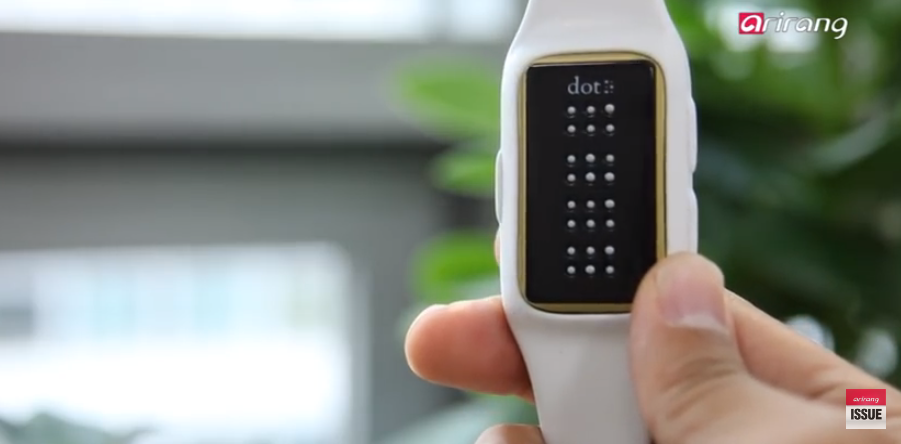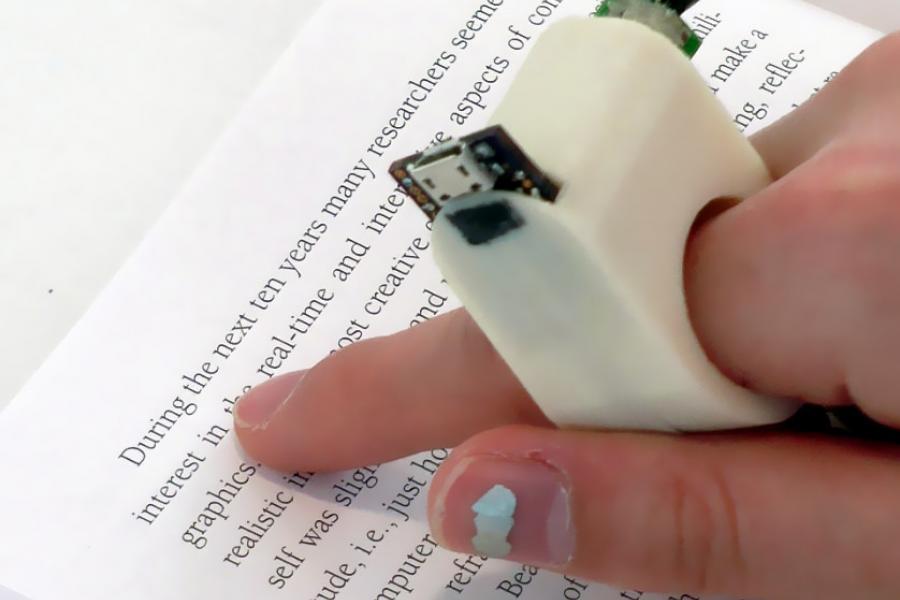Discover Innovative Tools Made for the Visually Impaired
The advancement of cutting-edge tools for the aesthetically damaged represents a substantial improvement in access and independence. Technologies such as wise glasses with AI capabilities and mobile applications developed to offer acoustic descriptions are reshaping everyday experiences for customers. Additionally, wearable devices that utilize haptic feedback boost environmental understanding, while modern-day Braille developments supply brand-new means to involve with message. As these tools continue to advance, their effect on the lives of those with aesthetic disabilities increases important questions about the future of inclusivity and freedom in different facets of life. What lies in advance in this technological landscape?
Smart Glasses for Navigation

Smart glasses designed for navigation are transforming the way visually impaired people connect with their atmosphere. These innovative tools use a mix of cam modern technology, synthetic intelligence, and acoustic responses to provide real-time details concerning environments. By employing obstacle detection systems, wise glasses can signal users to potential threats, enabling much safer wheelchair in both acquainted and unknown setups.
The assimilation of GPS modern technology further improves navigation abilities, allowing customers to receive acoustic instructions as they relocate. This hands-free method not just cultivates freedom however additionally empowers aesthetically impaired people to browse urban landscapes with raised confidence. Furthermore, many wise glasses are equipped with attributes that identify spots and road indications, supplying contextual info that boosts the individual experience.
In addition, the advancement of these devices is continuously progressing, with firms functioning to enhance the precision of object recognition and increase the series of navigational functions. As clever glasses become much more obtainable and budget friendly, they hold the potential to significantly transform every day life for aesthetically impaired customers. Inevitably, these cutting-edge devices stand for a crucial action towards inclusivity, offering improved flexibility and a better sense of autonomy for people navigating the world around them.

Mobile Apps for Daily Living
Just how can mobile applications boost the day-to-days live of visually damaged people? Mobile applications are transforming the way aesthetically damaged customers navigate their environments, take care of day-to-day jobs, and accessibility information. These applications offer important assistance with different capabilities, fostering self-reliance and enhancing high quality of life.
Numerous ingenious mobile applications are created particularly for daily living. For instance, apps like Be My Eyes connect aesthetically impaired customers with sighted volunteers via video clip calls, allowing them to obtain real-time assistance with tasks such as reviewing labels or navigating strange areas. Likewise, Seeing AI, established by Microsoft, utilizes expert system to explain environments, checked out message, and recognize objects, successfully changing a smart device right into an effective device for everyday assistance.
Furthermore, navigating applications customized for the visually impaired, such as Aira and BlindSquare, provide audio-based instructions and ecological details, allowing individuals to traverse their environments securely and with confidence. Past navigation and immediate support, mobile applications additionally sustain organization and job monitoring, with features that assist individuals set tips, develop order of business, and track appointments. In summary, mobile applications work as crucial sources, encouraging aesthetically damaged people to lead even more independent and meeting lives.
Wearable Technologies for Aid
Empowerment via modern technology is significantly evident in the world of wearable tools made to aid aesthetically impaired individuals. These innovative tools incorporate perfectly into every day life, enhancing navigation and offering crucial feedback to users. Clever glasses outfitted with video cameras can acknowledge faces and check out text aloud, allowing customers to interact more with confidence in social and specialist settings.
An additional significant development is using haptic feedback systems in wearable tools. These systems use resonances or other tactile signals to share info about the individual's atmosphere, such as barriers or adjustments in terrain, boosting wheelchair and safety and security. Wearable technologies also include wristbands that link to mobile phones, informing customers to notifications via refined resonances, therefore improving connectivity without dependence on visual cues.
As these technologies proceed to progress, they are not just improving freedom for visually damaged people but likewise cultivating a higher feeling of incorporation in society. By connecting the void between difficulties encountered in daily living and the capacity for freedom, wearable technologies serve as crucial tools in the mission for equal rights and empowerment for those with aesthetic impairments.
Audio Summary Devices
Audio description tools play an essential duty in enhancing ease of access for aesthetically impaired individuals, providing them with the capability to engage with aesthetic media. Screen readers for the blind. These tools supply narrated descriptions of crucial visual components in movies, tv programs, and live efficiencies, making certain that users can fully comprehend the context and emotions conveyed through visuals
Audio description can be integrated right into various systems, consisting of streaming solutions, movie theater screenings, and live movie theater. Lots of preferred streaming solutions currently include audio summary as an access attribute, permitting visitors to pick it easily. In addition to mainstream media, specialized applications additionally exist, providing audio summaries for art events, galleries, and other cultural occasions.
The efficiency of audio summary rests on the ability of the narrators, who have to share aesthetic information succinctly without diminishing the initial audio. Advancements in this area are likewise leading the way for more customized experiences, where individuals can change the degree of detail and pacing according to their choices.
Braille Innovations and Gadgets
Braille tools and innovations have actually substantially changed the way visually impaired individuals connect with text and info. Modern developments have actually led to the growth of flexible tools that improve proficiency and independence among individuals.
Moreover, mobile Braille displays and notetakers Braille notetakers combine conventional Braille input with modern performances, helping with note-taking, scheduling, and document editing and enhancing on the go. AI-powered visual aids. These compact gadgets usually include text-to-speech capabilities, connecting the space between Braille and auditory details
Furthermore, innovative Braille printers have arised, allowing individuals to produce Braille labels, documents, and educational products successfully. This access fosters better engagement in educational and expert environments, eventually promoting inclusivity.
Furthermore, research right into clever Braille technologies remains to increase. Gadgets that incorporate man-made knowledge are being explored to provide real-time navigating aid and contextual details, improving the user experience in diverse settings. In general, these technologies show a dedication to equipping aesthetically impaired individuals with innovation, ensuring they can quickly gain access to and involve with the globe around them.

Verdict
The development of ingenious tools for the visually damaged dramatically enhances self-reliance and top quality of life. Smart glasses, mobile applications, wearable innovations, audio summary tools, and Braille innovations jointly equip people by supplying vital navigation help, ecological recognition, and enhanced reading experiences. These technologies not only foster better addition however also advertise freedom in daily tasks, ultimately adding to an extra easily accessible and fair culture for aesthetically damaged individuals. Proceeded growth in this area holds guarantee for more improvements.
As wise glasses become much more available and budget-friendly, they hold the possible to considerably transform daily life for visually damaged users. Mobile apps are reinventing the method aesthetically impaired individuals browse their settings, take care of everyday jobs, and gain access to info. Applications like Be My Eyes link aesthetically damaged individuals with sighted volunteers via video clip phone calls, enabling them to receive real-time aid with tasks such as reading labels or browsing strange areas.Additionally, navigating apps tailored for the aesthetically impaired, such as Aira and BlindSquare, supply audio-based directions and ecological details, making it possible for users to traverse their surroundings securely and confidently.The advancement of cutting-edge tools for the visually impaired dramatically enhances self-reliance and top quality of life.